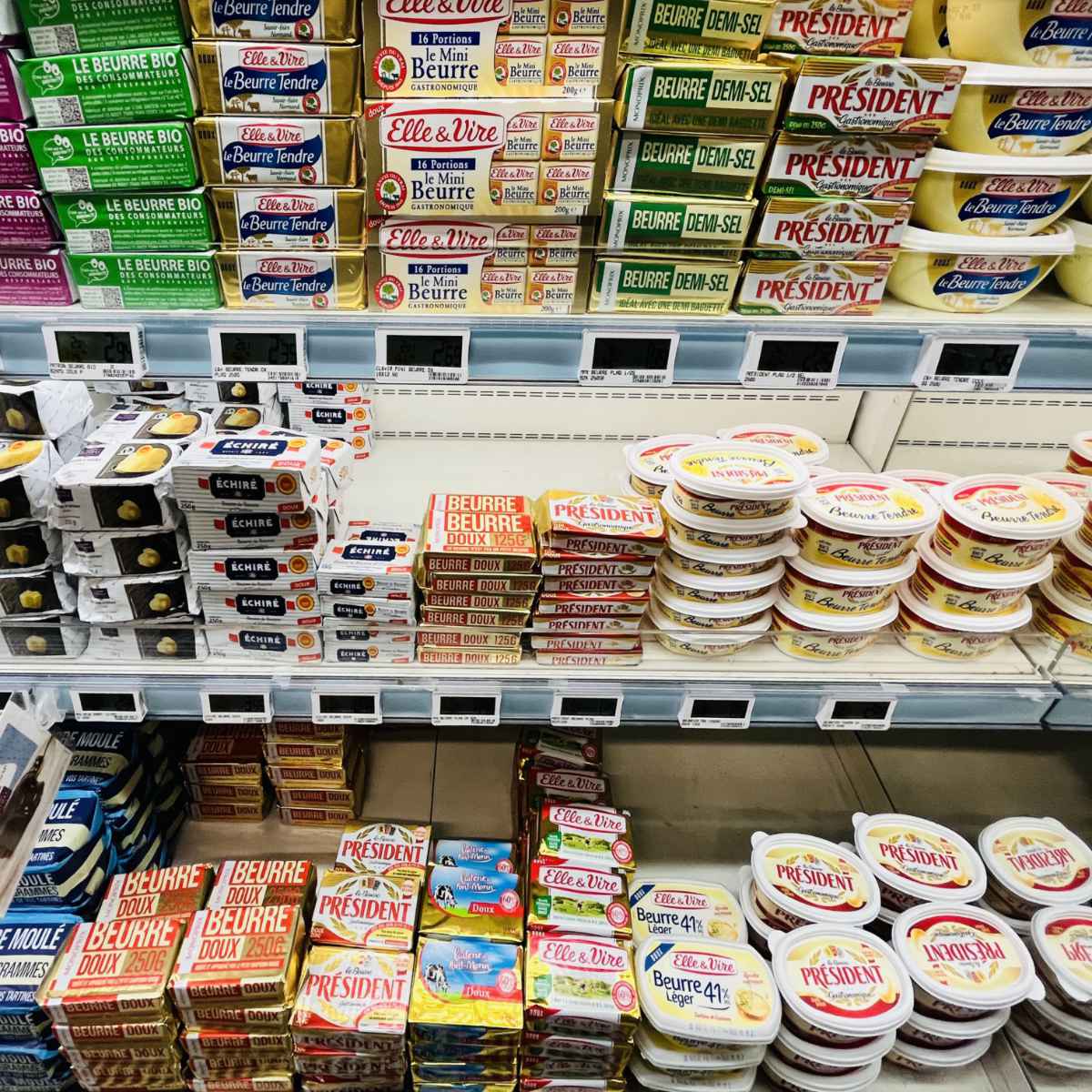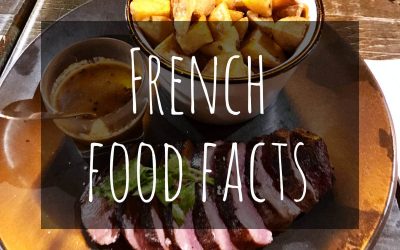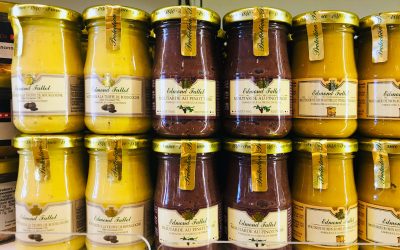The French take their food seriously, so you know that even a simple ingredient like butter in France will invite intense scrutiny. Traditional French butter made with age old techniques is often considered amongst the best in the world.
French butters come in a variety of types, and how they are used depends on the palate of the chef. Light and airy, these artisanal butters are reputed for their quality and hint of luxury. To be clear, they don’t taste anything like the large industrial brands. So let’s see what makes these butters so special, shall we? Allons-y!
Difference between French butter and American butter
The main difference between French and American butters is that French butter is higher in fat. It includes a minimum of 82% fat, compared to American butter which is 80% fat as legally required in the U.S. Some French butters can go as high as 87% fat.
In addition to being higher in fat, the butter-making process in France is also different. French butter uses live active cultures in the cream before the butter is churned. American butter, on the other hand, only uses pasteurized milk cream which has no cultures, and so does not ferment.
French butter-making process
In France, the cream is separated from the milk and is allowed to ferment before churning to allow bacteria to form. This then converts to lactic acid, resulting in a creamier and richer taste. Because the butter is cultured, it has a full, almost nutty flavour.
In addition, artisan butter-makers in France will also “malax” the butter and knead it manually using wooden tools, making it softer and improving the texture.
Types of French butter
There are several types of butters in France, just like there are several types of breads. France’s strong connection to terroir and the tradition of using milk products that are as natural as possible, mean that no two butters are exactly the same.
A lot depends on the region it comes from in France, the diet of the cows, the butter-making techniques used, and more. Different artisanal French butters are selected based on personal preference, and often depending on the dish that the butter is being in.
1. Beurre cru – Raw butter
Beurre cru is raw or unpasturized butter. This is as natural as it gets. It has to be used relatively quickly but has a rich taste and can vary depending on the region it is from.
It is not usually used in cooking as it has a slightly nutty taste, but makes a wonderful spread on bread, at breakfast, for example. It usually has to be consumed within 21 days.
2. Beurres fin – Fine butter
Beurres fin and extrafin is pasturized fine butter that is made within 72 hours of the cow being milked and churned within a maximum of 48 hours.
For beurre extrafin, the milk must not be refrigerated or frozen in any way to extend its shelf life. Beurre fin has a bit more flexibility, where 30% of the milk is allowed to be frozen or refrigerated.
3. Beurres salés – Salted Butter
Beurres salés is salted butter, and you can also buy beurre demi-sel which is semi-salted butter. The amount of salt in salted butter varies between 0.8g and 3g of salt per 100 g of butter.
Salt is a preservative, so salted butter also tends to last longer than unsalted. This is the butter that is most popular when cooking savory dishes. The classic jambon beurre sandwich will use a lightly salted butter. You can buy French salted butter here.
4. Beurres allégé – Low-fat butter
Beurres allégé et léger means low fat butter, and it has about 25% less fat content than regular French butter.
These are butters made from pasteurized and cream, with water and air kneaded into it to make it lighter and more spreadable. This type of “light butter” is not usually used in cooking because of its higher water content.
5. Beurre sec – Dry butter
Beurre sec means dry butter, but it actually means a butter with a heavier fat content of 84%. This is 2% points more than in the usual French butter, and so is used in heavier winter recipes like a mushroom gratin or tartiflette.
6. Beurre de baratte – Creamy churned butter
Beurre de baratte is richer type of butter that includes cream. While all butters include cream, in this case the butter is produced using a traditional mixing and kneading method.
It also uses cream that has been allowed to mature for a certain period of time, making the butter richer in flavor.
7. Beurres AOP – Protected designation butter
Certain regions in France are known for their butter and have earned special “AOP” protections. There are from 3 regions whose butter is protected:
- Isigny butter from Normandy
- Charentes-Poitou butter from Nouvelle Aquitaine
- Bresse butter from Rhône-Alps
Butters from these areas will have AOP written after their name, and the name cannot be used outside of that area.
8. Beurre doux – Unsalted butter
Beurre doux sometimes translates to “sweet butter” or “soft butter”, but in essence it is just butter where no salt has been added. The maximum salt content it can have is 0.5g or less per 100 grams. Because there is no salt added here, the butter must be used relatively quickly. You can buy French unsalted butter here.
9. Margarine
In addition, margarine is also a French invention. In the 1860s, tensions between Prussia (Germany) and France were as high as they ever were. War was on the horizon, so Emperor Napoleon III of France offered a prize to anyone who could make a satisfactory butter alternative, suitable for use by the military and the poor.
First made in France in 1869, margarine was invented as a butter substitute by Hippolyte Mège-Mouriès from beef tallow for the armed forces and lower classes.
These days, margarine is not very common in food recipes in France, nor is it used as a substitute for butter. The real deal is much more popular!
How the French eat butter
Perhaps the most surprising fact about French butter is not when it is used, but when it is nowhere to be seen. Dining etiquette in France means that butter is never served alongside a bread basket, during a meal. In this case, the bread is meant to mop up any sauces, not be eaten by itself with butter.
However, there are plenty of other times when French butter is liberally used. It is most often used in cooking, alongside olive oil to add a rich and smooth flavor. Some popular French dishes using butter are:
- Escargot
- Risotto
- Sauteed calamari
- Croque monsieur and madame
- Gratin Dauphinois
- Boeuf Bourguignon
- Coq au vin
In addition, I should note that while butter is not served alongside a bread basket, it will be usually be served in a charcuterie platter. As the celebrated French chef Paul Bocuse once said: “Without butter, without eggs, there is no reason to come to France”.

If you enjoyed that article, you may like to read more facts about French food. A bientôt!




